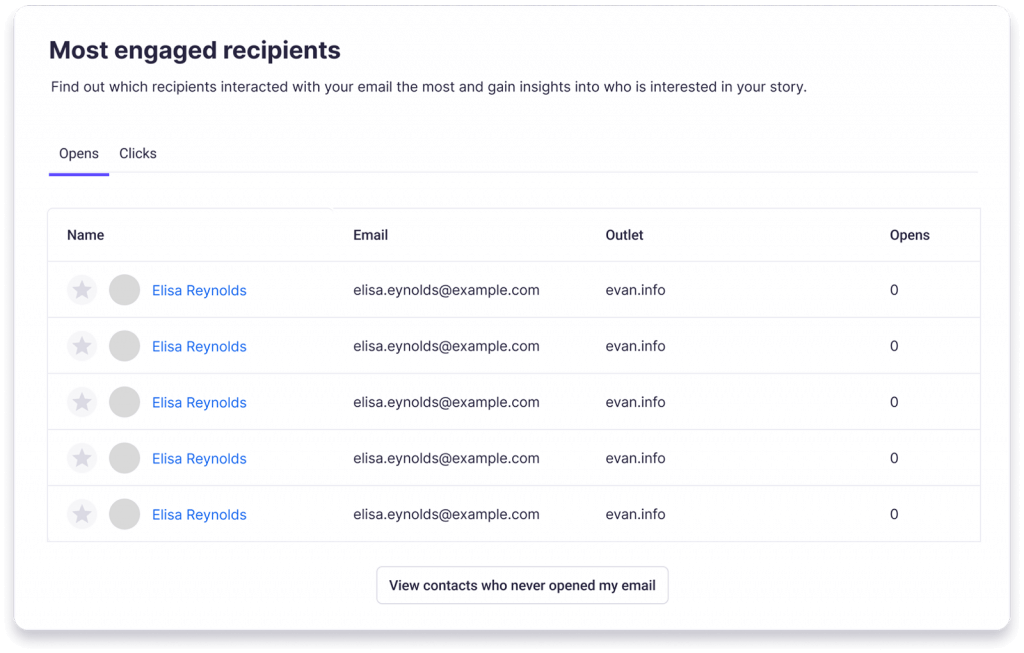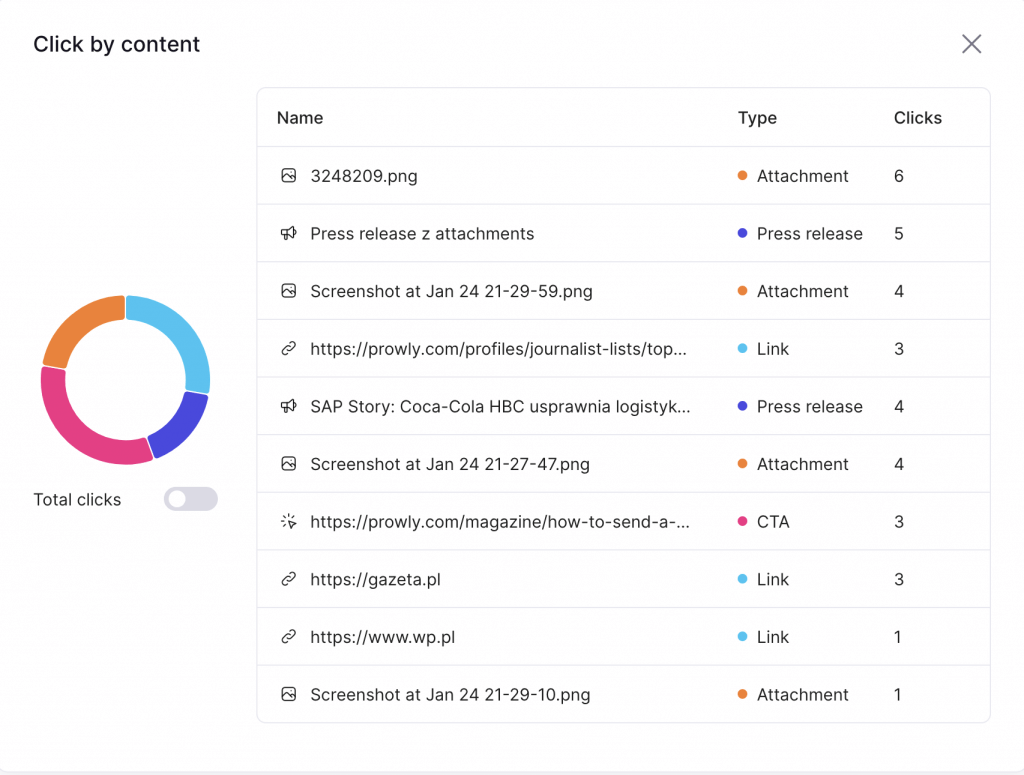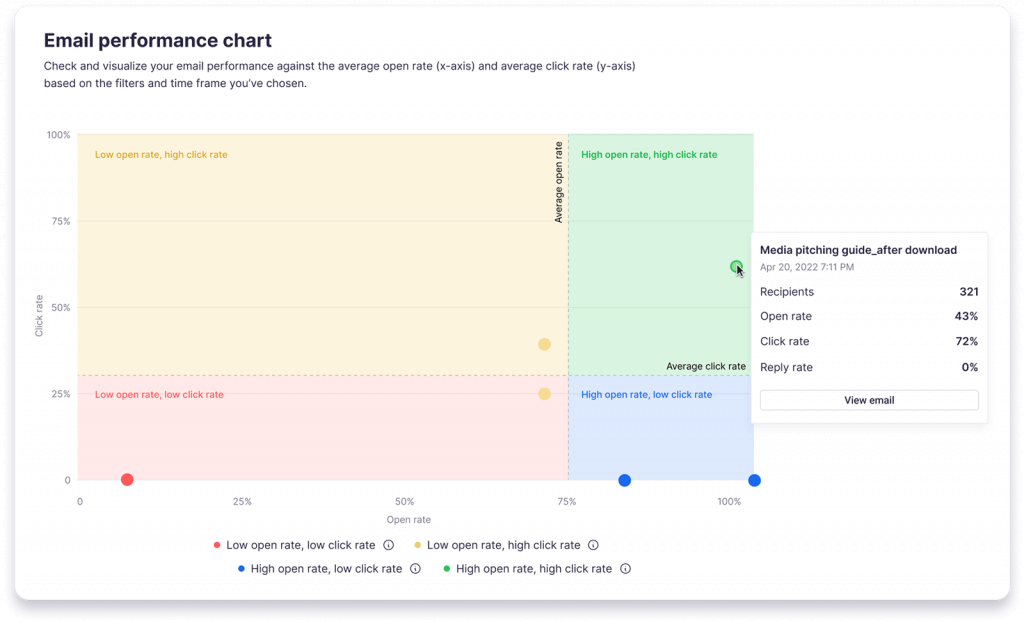While "spray and pray" tactics persist, savvy public relations experts recognize that mass, impersonal emails are largely ineffective. Such approaches might yield a few responses but rarely lead to quality media placements or lasting relationships. This method, ultimately a time sink, doesn't contribute to long-term brand success.
Moreover, with the diminishing number of journalists and traditional media outlets, effectively reaching the right audience is increasingly challenging. Failing to personalize content and messages is akin to self-sabotage, often irreparably damaging professional relationships.
Keep reading to discover how powerful pitching strategies and personalization tactics can help your emails achieve the open and click rates you’ve always wanted.
How to build more effective media lists
Successful media outreach results from quality research and targeted communication. By aligning your brand or product with journalists’ needs and leveraging Prowly’s data, you’ll enhance your pitching strategy, build trust with journalists, and significantly boost your chances of securing the coverage you want.
When targeting specific journalists
Track interaction history
Knowing the exact steps a recipient takes when receiving your email isn’t just a fun feature to check; it’s necessary. There’s a rush to see how a journalist opened your email several times within the first hour.
You can then use that information to build a valuable repository of insights and store it by, for example, adding notes and tags in the CRM with the link to an article resulting from a successful pitch.
In long-term strategy, such a repository becomes your guide in crafting future communications that resonate personally with each journalist. It’s not just about remembering their names and favorite topics; it’s also about understanding their habits, personal communication style, and what they want from a pitch.

“But… they didn’t even open my email”
Aside from technical issues with their mailbox, they might be out of the office, on parental leave, haven’t gotten to your email yet, or… your subject line did not grab their attention. Staying positive is the best you can do here, but improving the hook in the subject line might be useful if your emails are continuously not getting any spotlight.
Have you checked the keywords they use in their tweets? People are known to fixate on certain phrases, gravitate towards a certain writing style, and sympathize with emails that mirror what they’re into.
In the worst-case scenario, maybe it’s worth checking out another contact in this media outlet. Yes, it’s not ideal, but frequently, you might get an answer from someone else and get rerouted to the person you wanted to target in the first place. You know, if the door is closed, go through the window type of thing.
Opened emails, but no replies
We’re getting somewhere! Your subject line was fine; it got the attention you wanted. But now what? If that person usually opens your message but doesn’t reply, skims through the text, or clicks on no link, it’s time to polish up the story.

Look for new story angles and make sure your subject line matches what’s inside the email. Browse through their recent headlines. Is your pitch similar or wildly different?
While journalist’s mailboxes are constantly flooded with irrelevant emails, chances are that person has seen your name before if they opened a message from you more than once. In that case, ask about the type of news or data they want.
When targeting media outlets
- If you’ve pitched a specific outlet, check which responded positively and had good open and click rates. That’s the best way to determine which media resonated most with your last story angle. Then, highlight them in the CRM to easily find them anytime you prepare a sendout. Add them to favorites, assign them to proper media tiers, and add tags (for example, using beats).
- On the other hand, for the media outlets that are not on the most engaged list, double-check their audience. Chances are they might fully be in your target group, and your pitch is irrelevant to them. Alternatively, if you're set on a particular publication, you can find another journalist from this outlet and pitch to them instead.
How to improve content and storytelling
Initiate your analysis by focusing on email interactions. Examining this data closely will reveal the reasons behind your content's underperformance. With these insights, you can strategize and devise effective solutions to improve its impact.
Attachments, links, and CTAs
Look at the most engaged emails with links and attachments to understand audience preferences. Use this insight to incorporate new formats, such as videos or infographics, into your communications.
For instance, rather than linking to a press release, you might include its content directly in the email for easier skimming. When crafting email pitches, consider using concise bullet points instead of lengthy paragraphs to convey your message more effectively.

Don’t forget to analyze the engagement rate per PR campaign as well. Which media lists did you include in a particular campaign? Take a closer look by analyzing their differences. For example, was the media list cumulated by local or national media outlets? Was it mostly editors or journalists? These are some of the questions you should consider when analyzing the results of a pitch.
Email performance chart analysis
High open rate and high conversion rate
For the emails that are performing best, see what worked there. Is it a powerful subject line combined with an amazing and clear story, or maybe the email format was clear and to the point? Whatever it was, keep on going! In the meantime, see who resonated with your pitch and mark them in the CRM with a proper tag. For example, you can categorize your contacts by the topic they resonate with, add them to favorites, or even jot down a note about which keywords in those subject lines are getting clicks.

High open rate and low conversion rate
Check if the pitch was personalized. In the future, utilize personalization tokens and other features to ensure the message is crafted correctly for specific recipients. Try thinking of a different pitch angle or attach different types of content to lure the audience in to click and find out more. With Prowly, you can personalize your message for up to 20 recipients per send-out.
Scroll down to read more about personalization
Low open rate and high conversion rate
If your campaign had a low open rate but a surprisingly good click rate, perhaps the media targeting was too broad. You should identify the recipients who showed interest in your pitch, mark them in the CRM with appropriate tags, such as the topics they resonate with, and add them to your favorites. For future campaigns, consider narrowing down your targeting by preparing several media lists, each tailored to a different story angle.
Low open rate and low conversion rate
Carefully review the recipient list for campaigns with the lowest open and click rate to see if the story angle matches the audience. Also, reevaluate the subject lines you wrote. Maybe there’s a way to improve them? Then, consider the timing of your outreach – were there any overlapping media events or holidays going on? All of those things might have impacted media interest in your topic.
In my experience, aiming for an email open rate of around 20% is a solid goal for PR efforts. It's a benchmark we often target at PRLab.
When it comes to crafting those all-important subject lines, I've found using an email subject line checker to be incredibly helpful. These tools are great for pinpointing effective keywords, all while steering clear of those spam triggers.
It's about reaching that balance between being informative without tipping over into being too salesy. To find keywords or buzzwords that grab attention, I see what competitors are doing, especially their email campaigns and marketing materials, looking at the topics they cover and what they're missing.
By focusing on these overlooked areas, we can craft messages that stand out and resonate more deeply with our audience." - Matias Rodsevich, Founder at PR Lab
Implement effective personalization strategies
Using the recipient’s name and giving them an empty compliment about their most recent article is not enough anymore. Think of it this way – media contacts are people with hobbies, values, and things they like or don’t like. While pitching some journalists is a Sisyphean struggle, to say the least, most of the time, it’s worth researching who they are what they write about, and even learning how to read between the lines of the content they’ve produced.
While preparing your next email send-out, you can write personalized messages to up to 20 journalists (all other contacts will receive the original email)
Here are some ideas on how to do it:
- Write down a few interesting facts about each of the journalists you’re targeting. You can search the Media Database for their name or use Media Monitoring to get all the trending topics from their work outlet. Don’t forget to check social media channels and analyze them for trending keywords and discussions they participated in. When you’re done, add notes, tags, and links to articles in the CRM so that none of your research gets lost.
- Dig deeper into the outlet they work for. Who are the readers? What kind of stories might resonate with them? Is there a specific point of view they’re interested in? Those small details can make a difference when getting your story across.
- Refer to the last article or tweet of the person you’re targeting. You can always refer to it and write something interesting about it - a controversial take, a new point of view, or an opinion that might spark a debate.
If all of this seems like a lot of work – it is. However, remember that you’ll only need to research like this a couple of times a year. All the new information will build on the previous research. Once you’ve established your media database, it’s not as time-consuming, and you can focus solely on keeping your information current.
Conclusion
Data-driven outreach cannot be overstated. Since we’re striving to make more meaningful connections and secure valuable media placements, the adoption of 1:1 personalization techniques and in-depth analysis has become essential. With Prowly’s detailed information, you can improve your strategy and base it on clear data – not just hypotheses.

